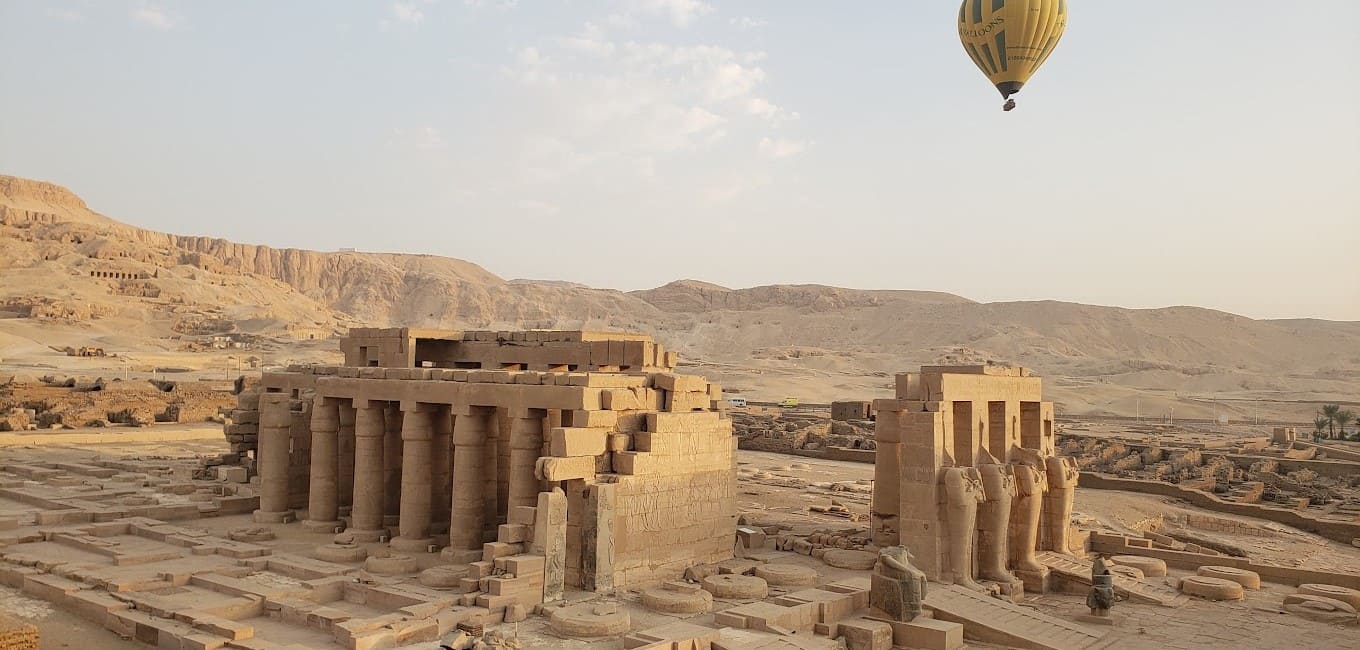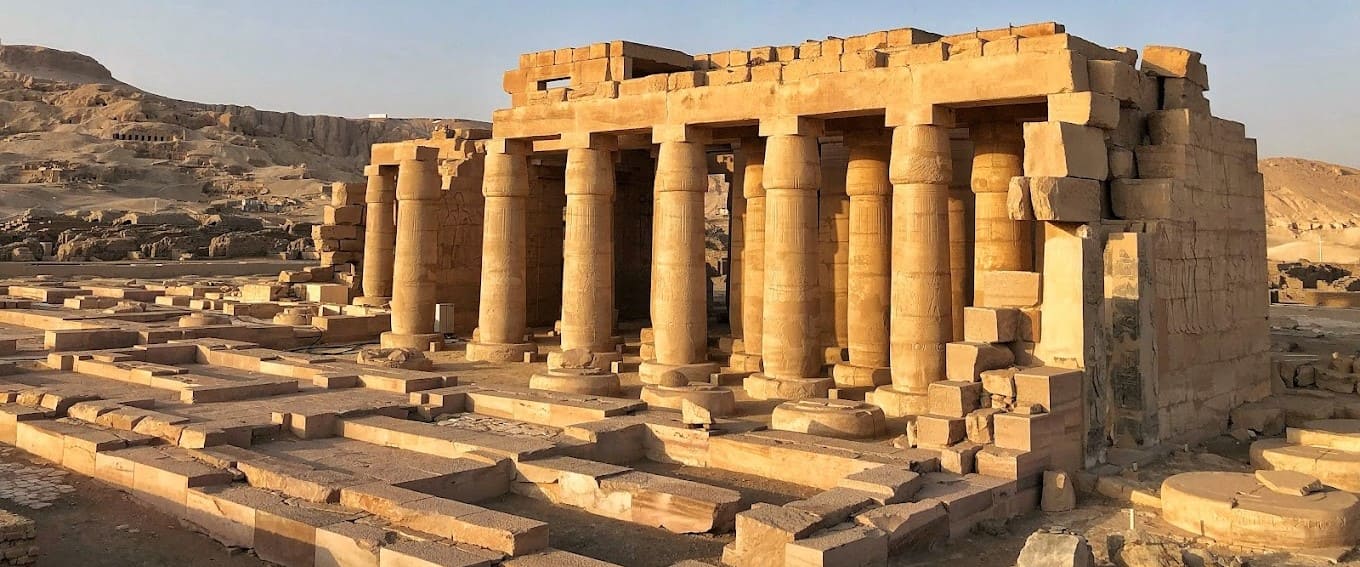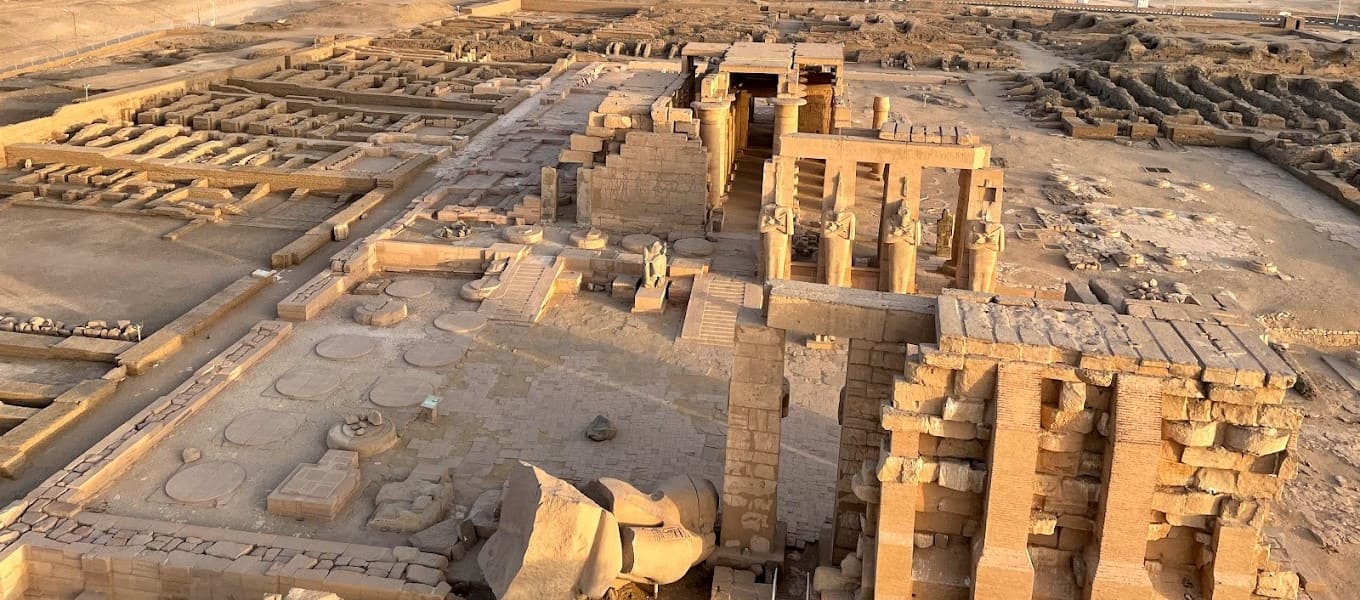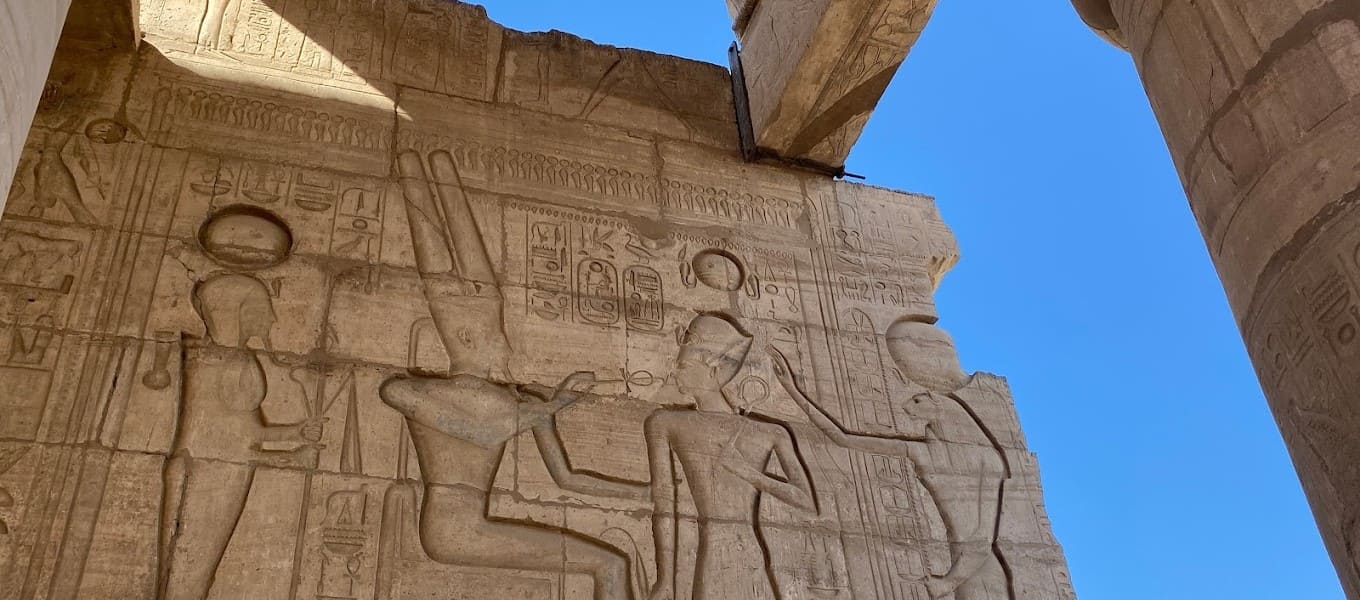The Ramesseum: Mortuary Temple of Ramses II
The Ramesseum Temple is one of the great funerary temples that were built for the dead in ancient Egypt. It is one of the most beautiful temples in Egypt. It was built by King Ramses II and dedicated to the god Amun. The temple lies on the edge of the cultivated land; some one-and-a-half kilometers south of Deir el-Bahri on the West Bank of Luxor. Unlike the well-preserved structures that Ramses II built at Karnak and Abu Simbel, this mortuary temple, dating to 1258 BC, still has more than enough to interest the visitor.

Ramesses II is the name most often heard in association with many of the monuments around Luxor and further south. He was a prolific builder and also had a habit of repurposing existing monuments to add to his reputation. He was the greatest conqueror in the history of Ancient Egypt, ruling for 67 years during the New Kingdom (1279—1213 BC); and extending the range of his kingdom into new frontiers in the south, west, and north in Syria. This temple is dedicated to him and a testament to his power and influence and it is meant to be the greatest of all monuments.
During the Roman Imperial period, the Ramesseum was known as the Tomb of Ozymandias, mentioned by the historian Diodorus (1st century BC). And later it was immortalized by the English poet Shelley in his poem Ozymandias.

The temple includes a huge number of seated statues of Ramses II; as well as inscriptions and decorations that tell the nature of life in that period of history. Also, the walls of the Ramesseum, which is only about half preserved, are decorated with reliefs, including scenes depicting the Syrian wars, the Festival of Min, and the Battle of Kadesh which is characterized by the first peace treaty in the world.
Description of the Ramesseum

The Temple measures 600 feet by 220 feet. The eastern pylon of the temple was the main entrance and was once decorated with scenes of the battle of Kadesh, but it is in ruins today. On the right wing of the pylon, you will find inscriptions that represent the 118 cities that Ramses III conquered during his military campaigns. You will also see scenes of prisoners taken to the King.
On the left wing of the pylon, there are scenes of the famous battle between Ramses II and the Hittites. After that, you will proceed to the first open courtyard, where you will see the remains of a colossal figure of the king. It is estimated to have originally a total height of 17.5 meters and to have weighed more than 1,000 tons; and at its feet, it read: “My name is Ozymandias, King of Kings: Look upon my works, ye Mighty, and despair.”

In the great hypostyle hall, 29 columns are still standing. The ones in the middle are shorter than those on the sides to allow light into the temple. Here, on the left side, you can see more scenes of the battle of Kadesh. On the right of this hall, and outside the walls of the hypostyle hall, lies a much older Temple; built by Seti I and dedicated to the God Amon Ra.
The second courtyard is in a much better condition than the first one; and you can see on both sides, two rows of Osiris columns, representing Ramses II. Further south there is another small hypostyle hall that once had 8 papyrus-bud columns. The Hall of Astronomy is located, where the first 12th-month calendar is illustrated. This hall is decorated with scenes of the offering and scenes of the sacred boat of Amon Ra. On the western wall, you will also see Ramses II sitting under the Tree of Life, where the God Thoth and the Goddess Seshat are recording his name, in the leaves of the tree, for a long life.
Also: Check out our Tours to Luxor from Here